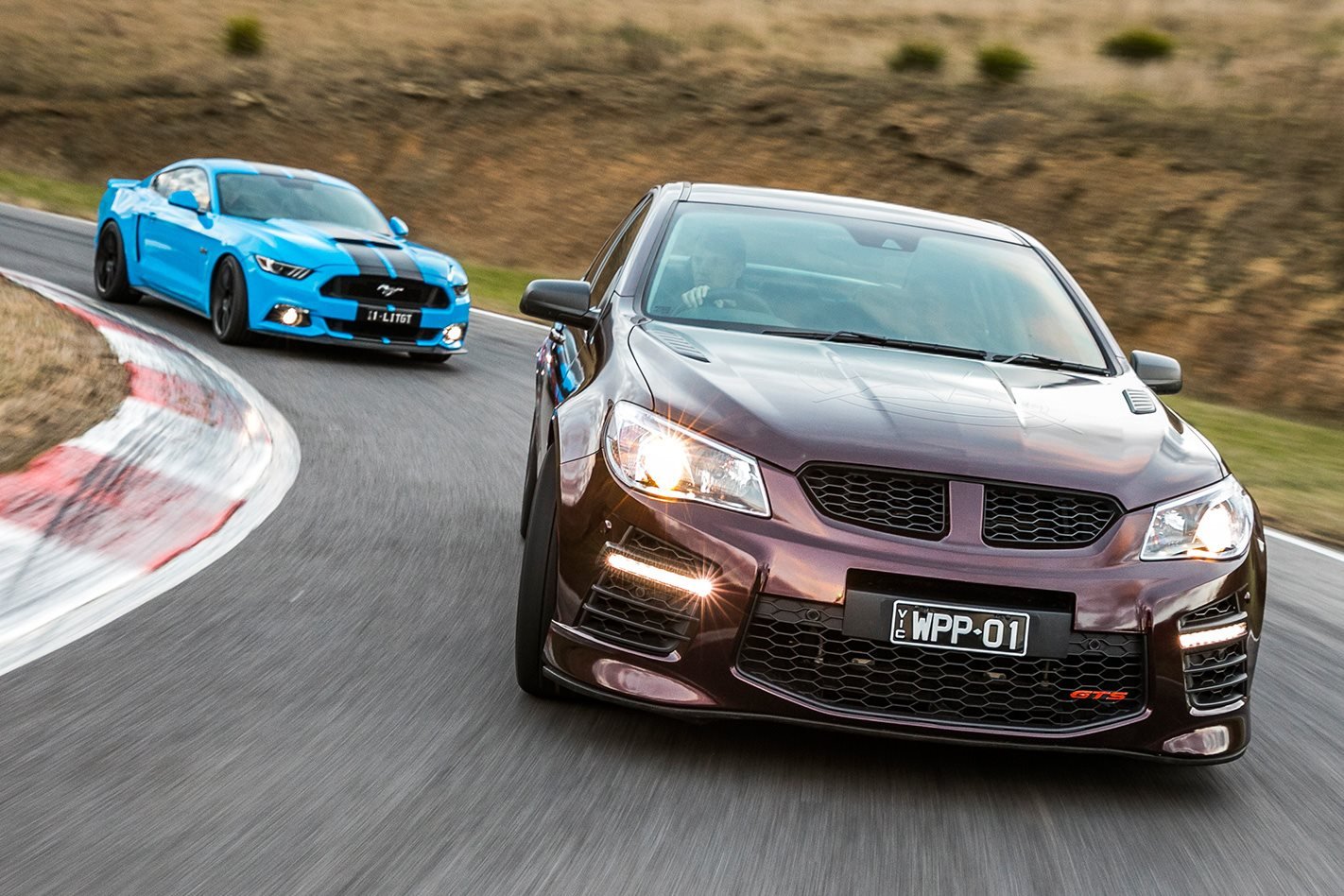Talk about deja vu: back in 1989, HSV built a model called the SV89.
It was based on a VN Commodore and it was white with a fuzzy, veloury, vaguely burgundy interior called Mulberry. Sounds awful, but it was kind of cool. Different. Unusual.
So you can understand why I thought I might be having a junk-food flashback when I stepped into the W557 and clocked the burgundy Alcantara that stretches across the dashboard and door trims. And I don’t know if it’s deliberate or not, but I’ll be damned if the W557 doesn’t even smell like an SV89. Spooky.
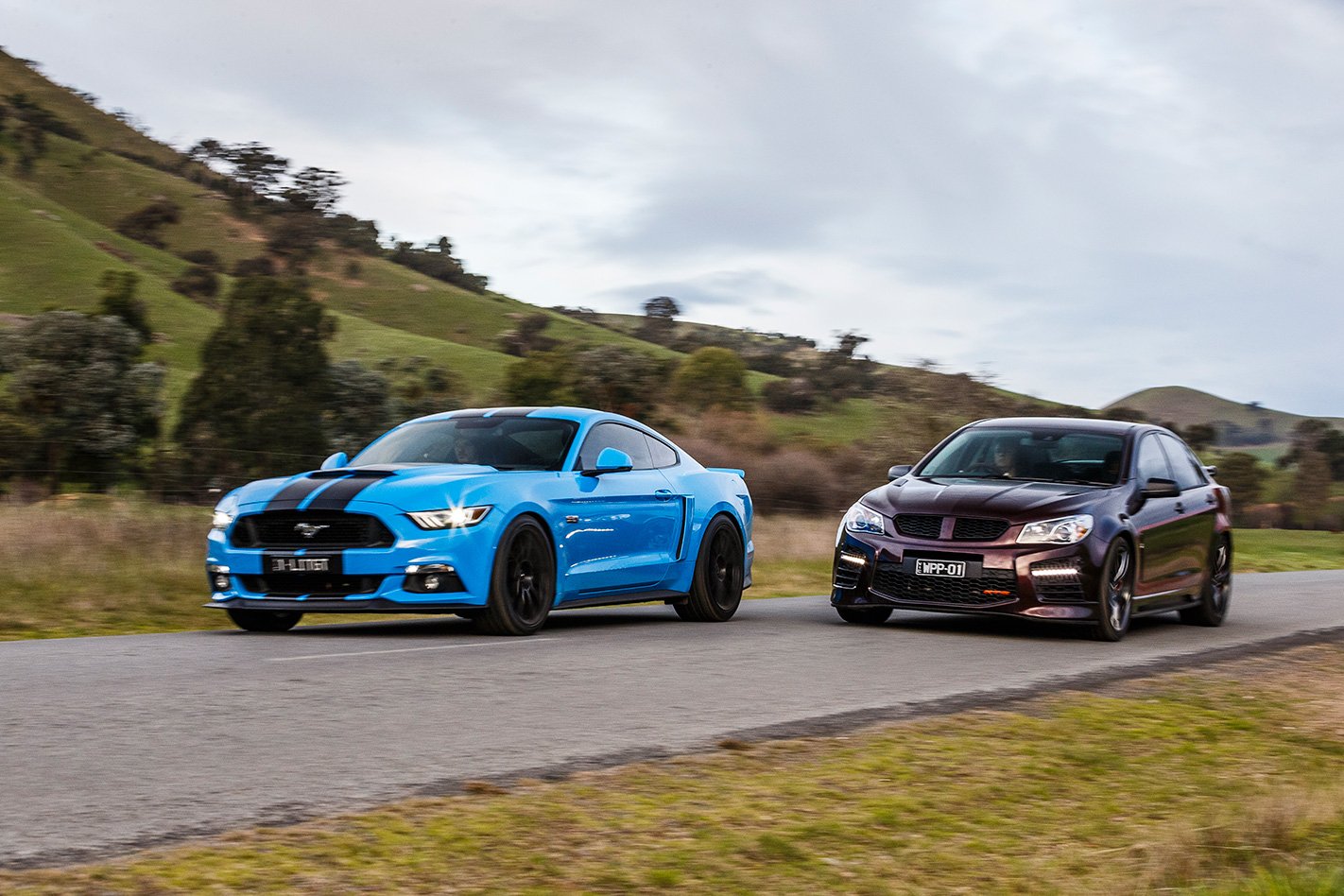
This, of course, has nothing to do with the Herrod treatment, but it’s still a feature you can do nothing about, short of handing the ’Stang over to a reality TV show for a quick, sponsor-approved ‘makeover’.
No thanks. But the Mustang will become even more familiar, trust us. Now that the Falcon lives in an urn on the mantelpiece, fans of Blue-Oval performance will be gravitating to the ’Stang en masse.
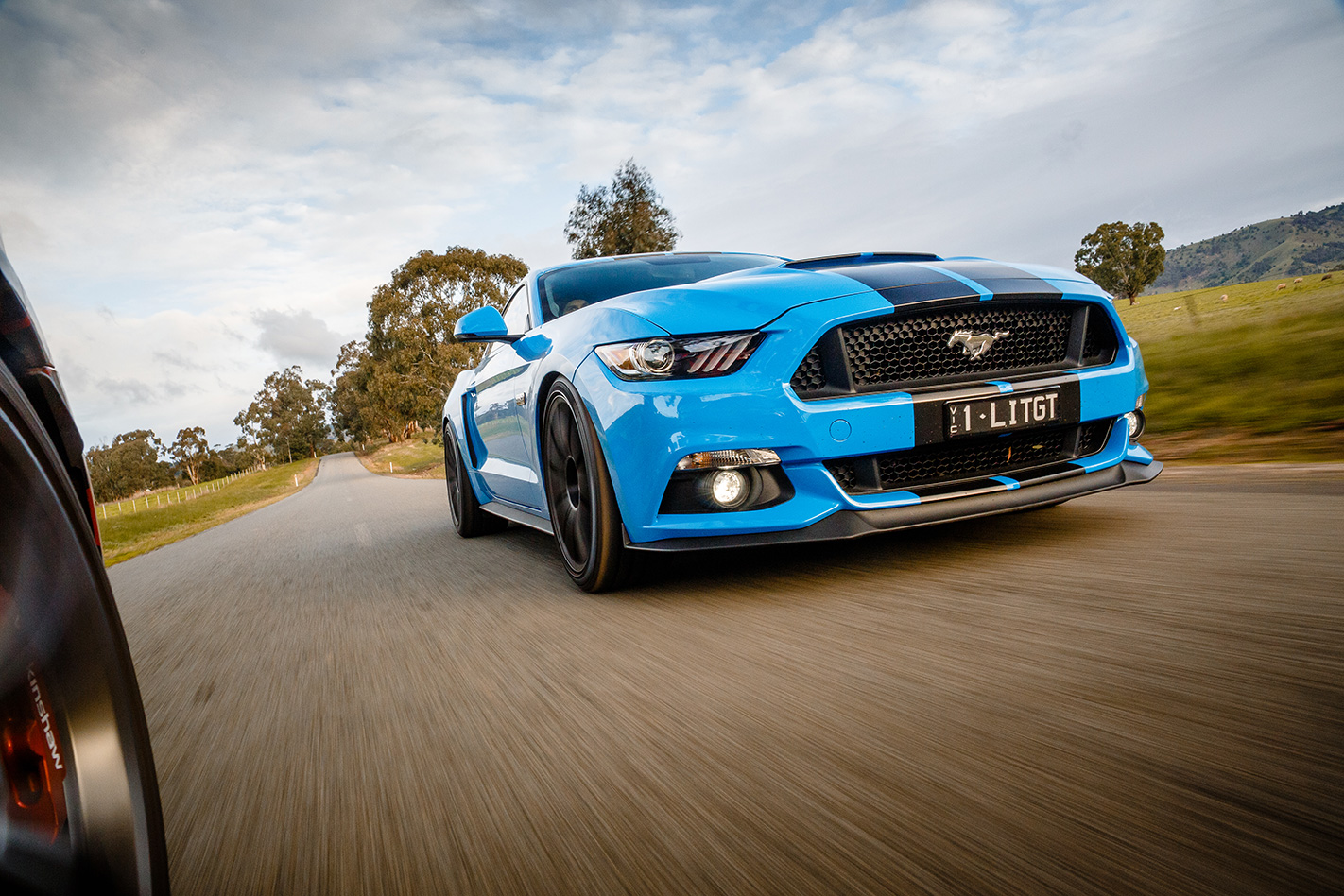
Now, taking the HSV GTS from its standard 430kW and all the way to 557, is a reasonably involved process. The stock supercharger remains but Walkinshaw adds a set of ceramic-coated headers, a cat-back exhaust with an active yodel-flap, a cold air intake, specific ECU calibration and a solid isolator coupling, whatever that is. (Turns out, it’s a tougher blower pulley, ’cos we checked.)
You also get 1000cc injectors and a pretty aggressive camshaft and a tougher set of beehive valve springs. That cam change also involves a new cam sprocket and a bolt kit to marry the stick to the cog. And if the car you’re presenting for the W557 treatment has done more than 20,000km already, WP will insist on also selling you new head gaskets, head bolts, lifters and lifter guides.
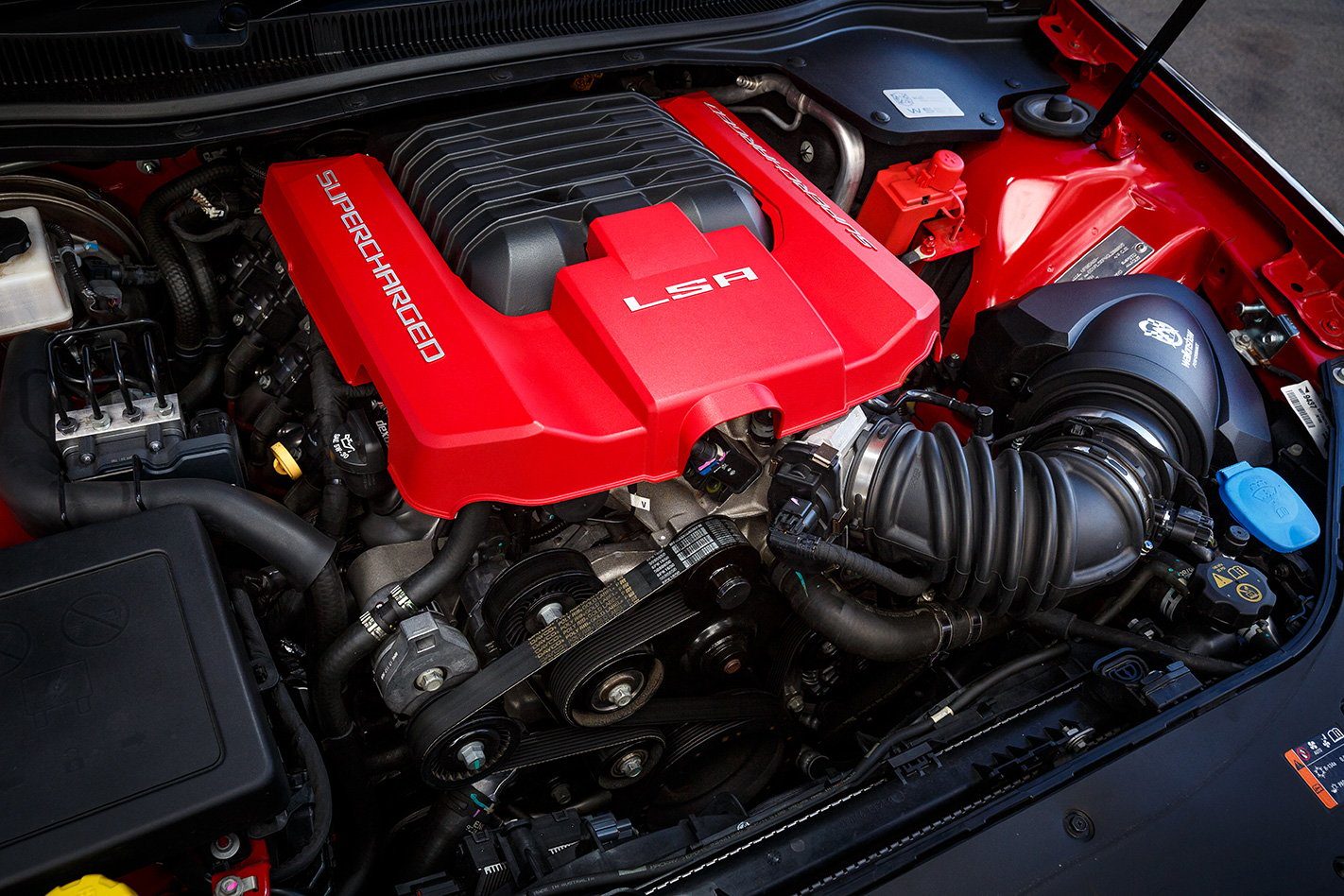
The other thing that’s been done is to fiddle the ECU to partly unlock the torque converter in the first four gears. The idea is to take some of the shunt out of the driveline as the hammer falls, but it also makes the car behave as though it has a 2500rpm stall converter fitted. WP swears it’s just software, but it gives the car an old-school hot-rod feel.
Over at Herrod Performance, the stock five-litre Coyote lump in your Mustang GT gets a similarly serious boot up the ginger. But instead of opening the engine and changing cams and stuff, Herrod starts with a couple of little mods to the engine (machining some bosses, etc) for it to accept the 2.3-litre Eaton blower.
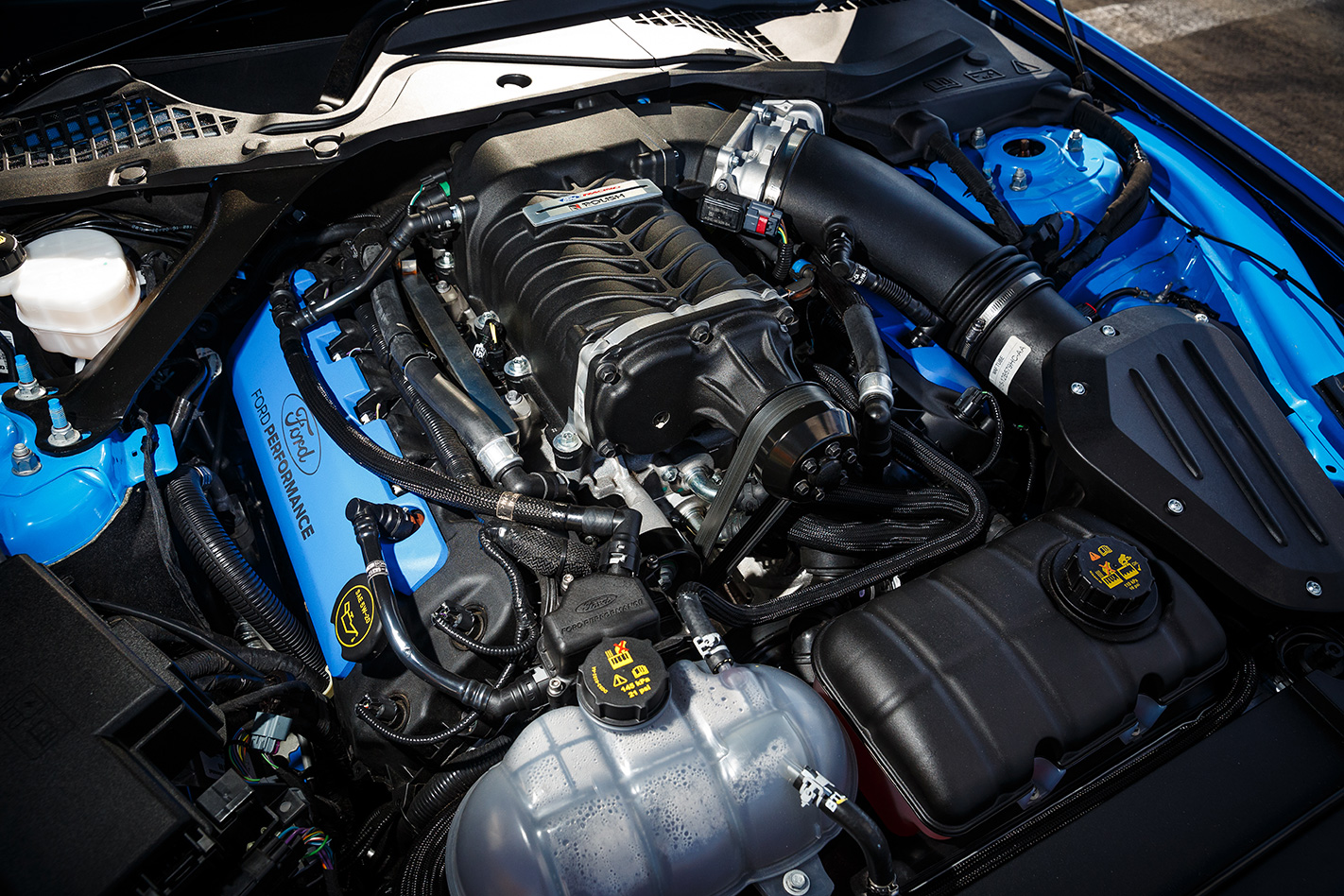
Typically for a Herrod car, though, it hasn’t just been the engine that’s been fiddled with, there’s also a whole new suspension set-up as well as a means of making sure the overall package doesn’t have any shortcomings or rough edges.
So, in this Base Compliance Pack (as Herrod calls it) you also get a Ford Motorsport-developed kit that includes new sway bars, shocks, springs and even the entire front strut assembly complete with new top-hats. There are new, stiffer rear bushes and the kit drops the ride height by about 25mm. In manual-transmission cars, you also get a Ford Motorsport short-shifter as part of the $23,500 happy meal.
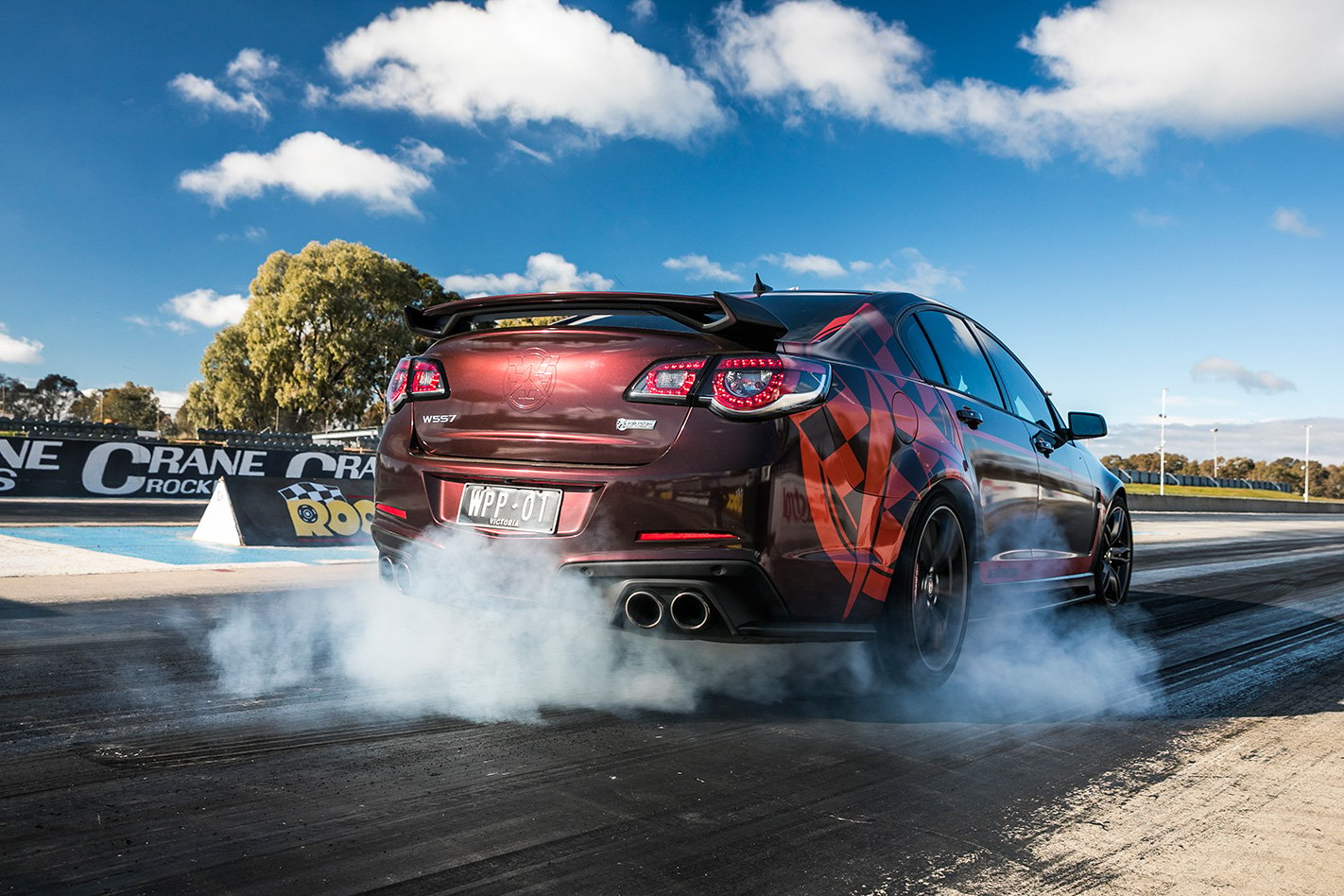
Our best was an 11.69sec at 201.56km/h dead and while a lot of cars would have you fiddling with tyre pressures and holding your tongue a particular way to get down to that, the W557 did it time and time again.
There was no appreciable heat-soak buggering things up and no hint that any component was getting sick of being beaten on. So, not only is it hella fast, it’s also super consistent. Part of that is in the way the tranny works but it’s also down to the fact that the GTS seems to have a pretty tactile set of controls that allow you to dial in a bit of finesse with your right clog.
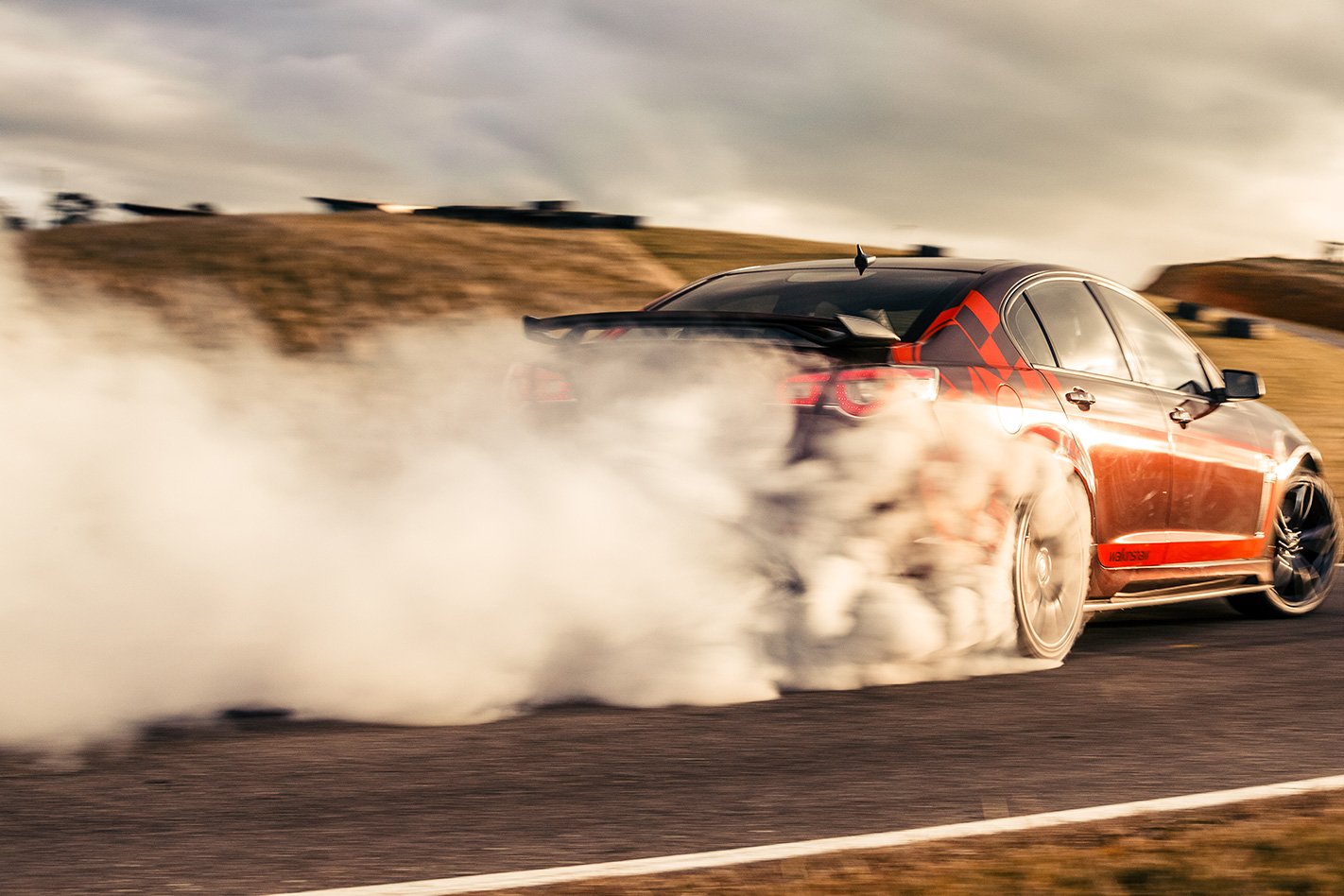
We also tried it with the traction-control left switched on and, while it’s a soft kind of intervention, it was still quicker with traction off and a driver paying attention. And your attention will be grabbed, particularly at the top end of the strip where the GTS felt anything but nice.
Dunno whether it was the aero or a crosswind on the day or what, but even at 200-plus, the Walky still has its snout in the air and feels intent on waving its front wheels around under you. It never actually strayed from the lane, but confidence inspiring it was not.
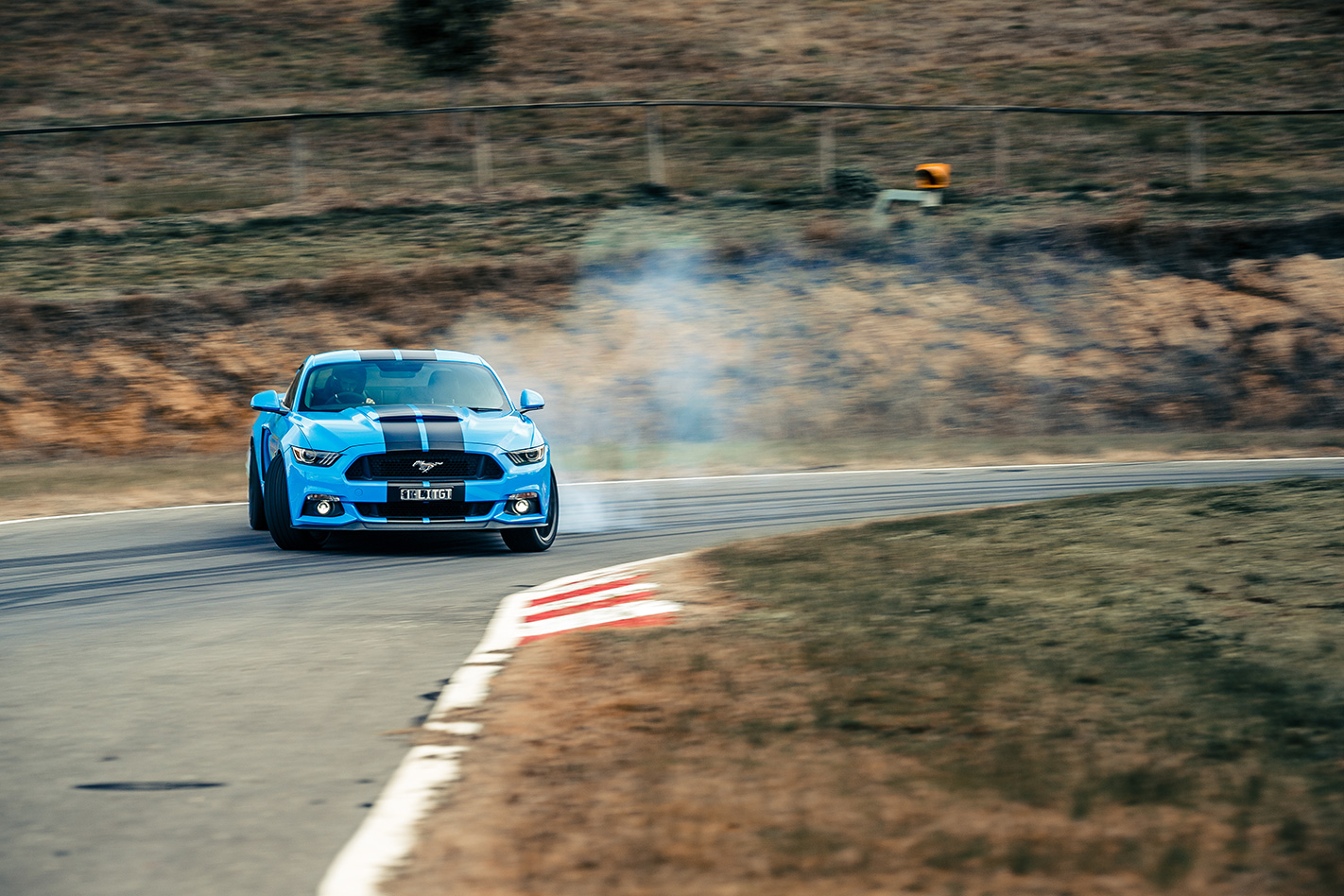
Throw in a manual gearbox, a shifter that strikes me to be more about form than function and gearing that just doesn’t suit quarter-miling, and you have yourself a car that has the heart, but not the legs to beat 12.59sec at 195.8km/h and 0-100 in 4.99sec.
Let me explain. The clutch in this thing is sharp. Has to be to cope with the urge. But it also means there’s no percentage in trying to slip it out. (A) It won’t do it and, (b) you’d just shag it anyway. So you’re stuck with trying to find a rev point that allows the clutch to bite and not bog the engine, but that also prevents the back tyres from turning into dervishes.
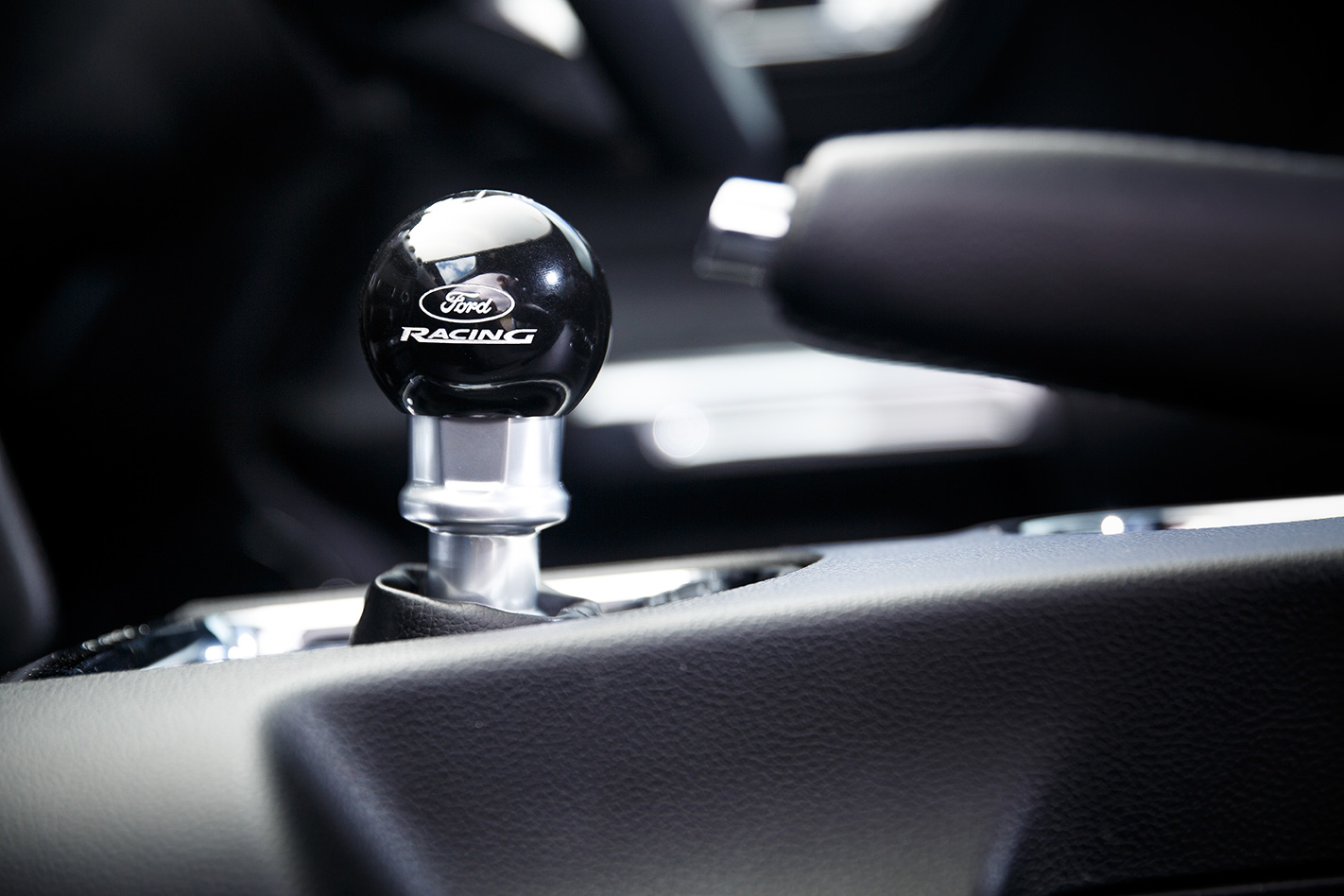
Now, that shifter. I know little stumpy gearsticks suggest raciness and snap-shifting, but this one seems to me to do nothing more than reduce your mechanical advantage (by moving your leverage point) on what starts as a manly sort of gearbox in the first place.
Sometimes the shifter didn’t want to find fourth for me in a hurry; Scotty had trouble with fifth. And even when it does slot in, it’s a slow, grumpy, sticky action that just refuses to be hurried. And then there’s the gearing which, combined with a pretty savage ignition cut at redline, ensures there’s no point in pushing your luck.
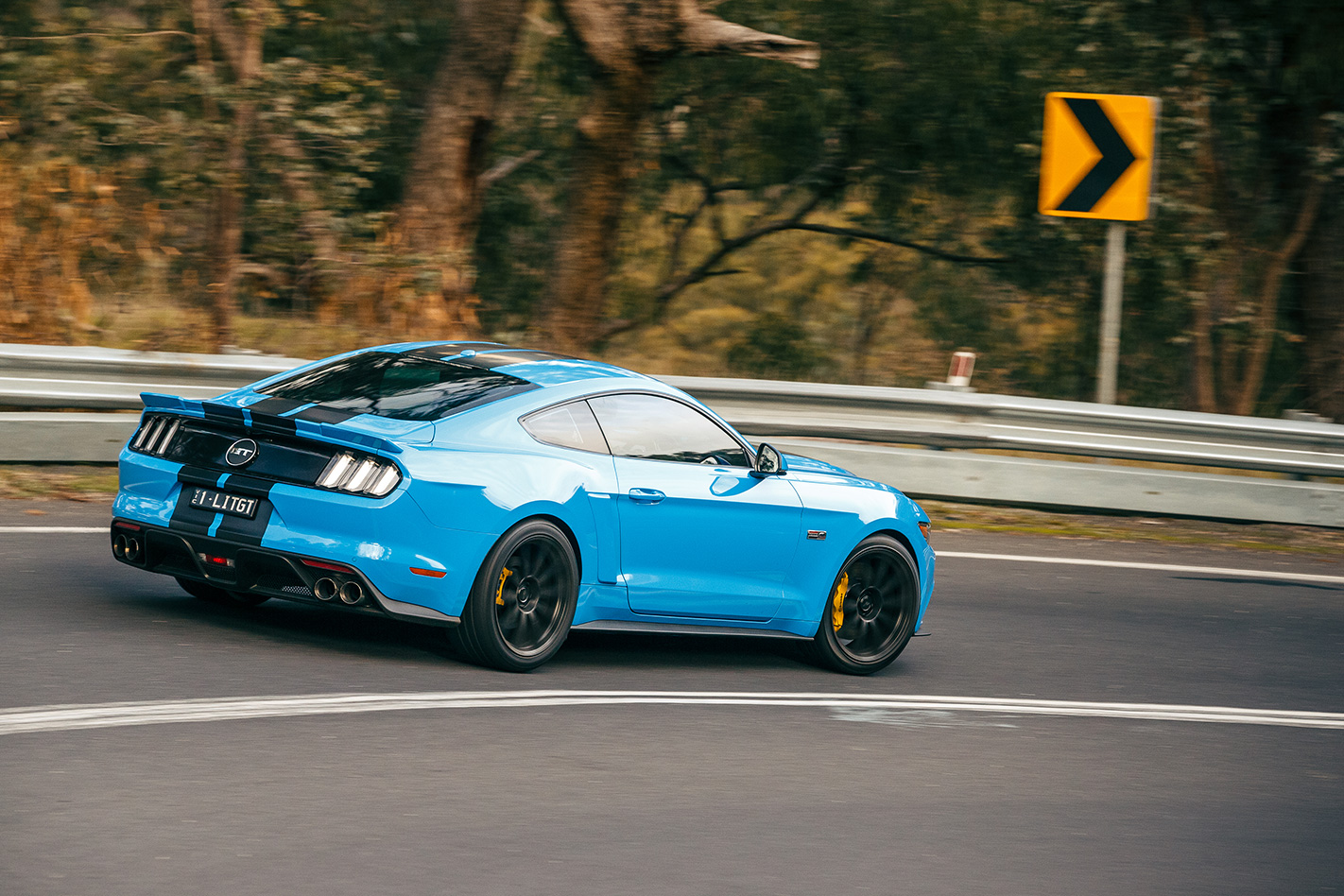
Four, slow, clumsy gearshifts. And that is why the Mustang runs 12s and not 11s. And it’s the only reason. And we know that, because we drove a Herrod ’Stang with the same engine package and an auto box this time last year and it ran 12.1 on a cold, greasy track. As it is, though, with the manual box, the gearing, the limiter and the box-of-hammers gearshift, a 400m run turns into a quarter mile’s worth of driver errors.
Of course, quarter-mile blasts aren’t the point of the Herrod car, so we pointed it at some corners to see what all that suspension work achieves. And the answer is plenty. While the steering hasn’t been directly altered, the firmer set-up gives the Mustang more pointiness.
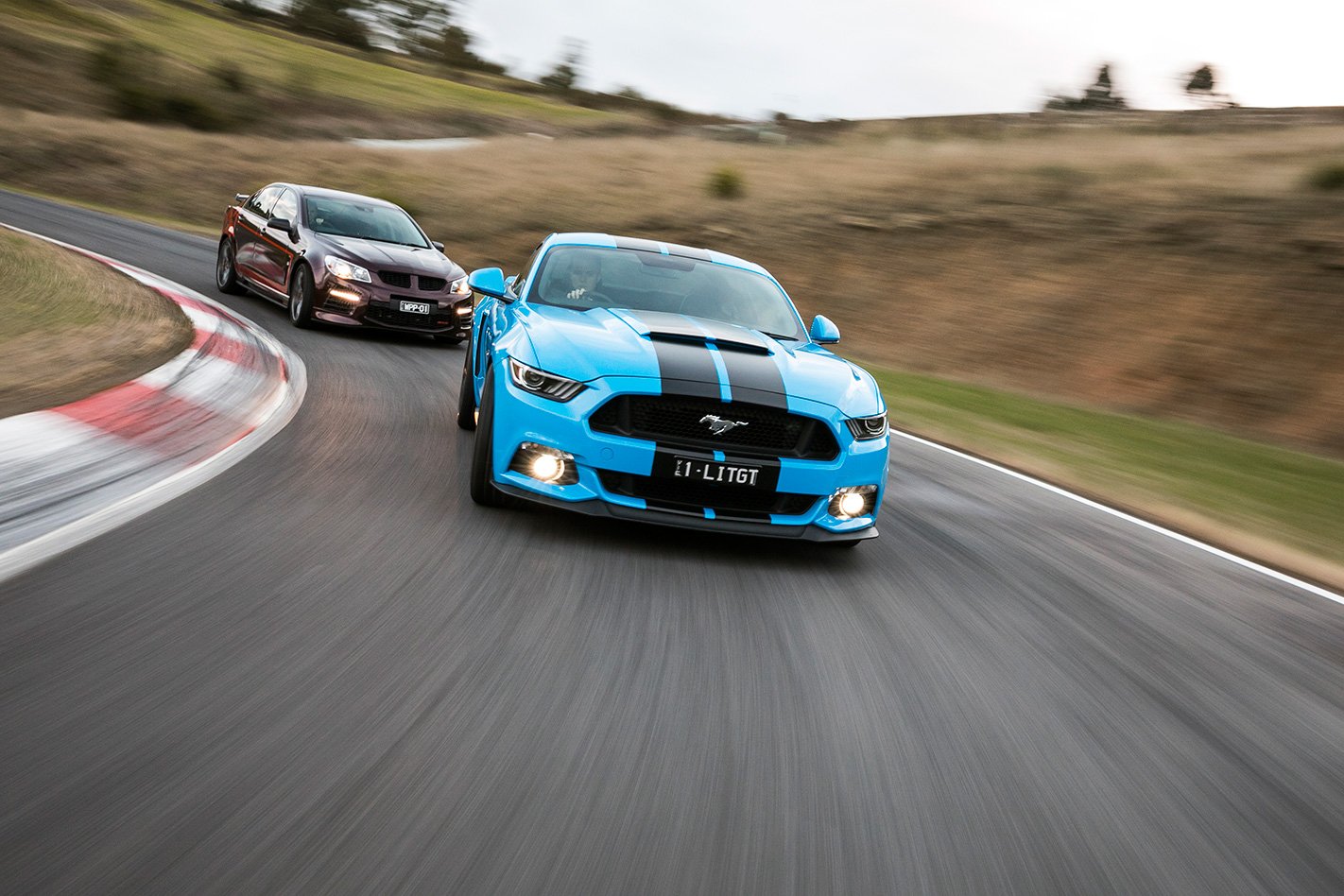
The Mustang also lacks the adaptive dampers of the GTS, but the reality is that it doesn’t need them. The ride is firm, but beautifully controlled and, for once, it doesn’t need to be doing 200km/h to start making sense. And to be honest, the W557’s suspension is really only tolerable in Tour mode, and switching the rotary dial beyond that to Sport or Perf or Race sends ride quality packing.
On a circuit, the extra control enabled by the Ford’s manual ’box would possibly give it the edge going into corners, especially since the Walky’s auto box doesn’t comply with paddled downshifts in any particular hurry.
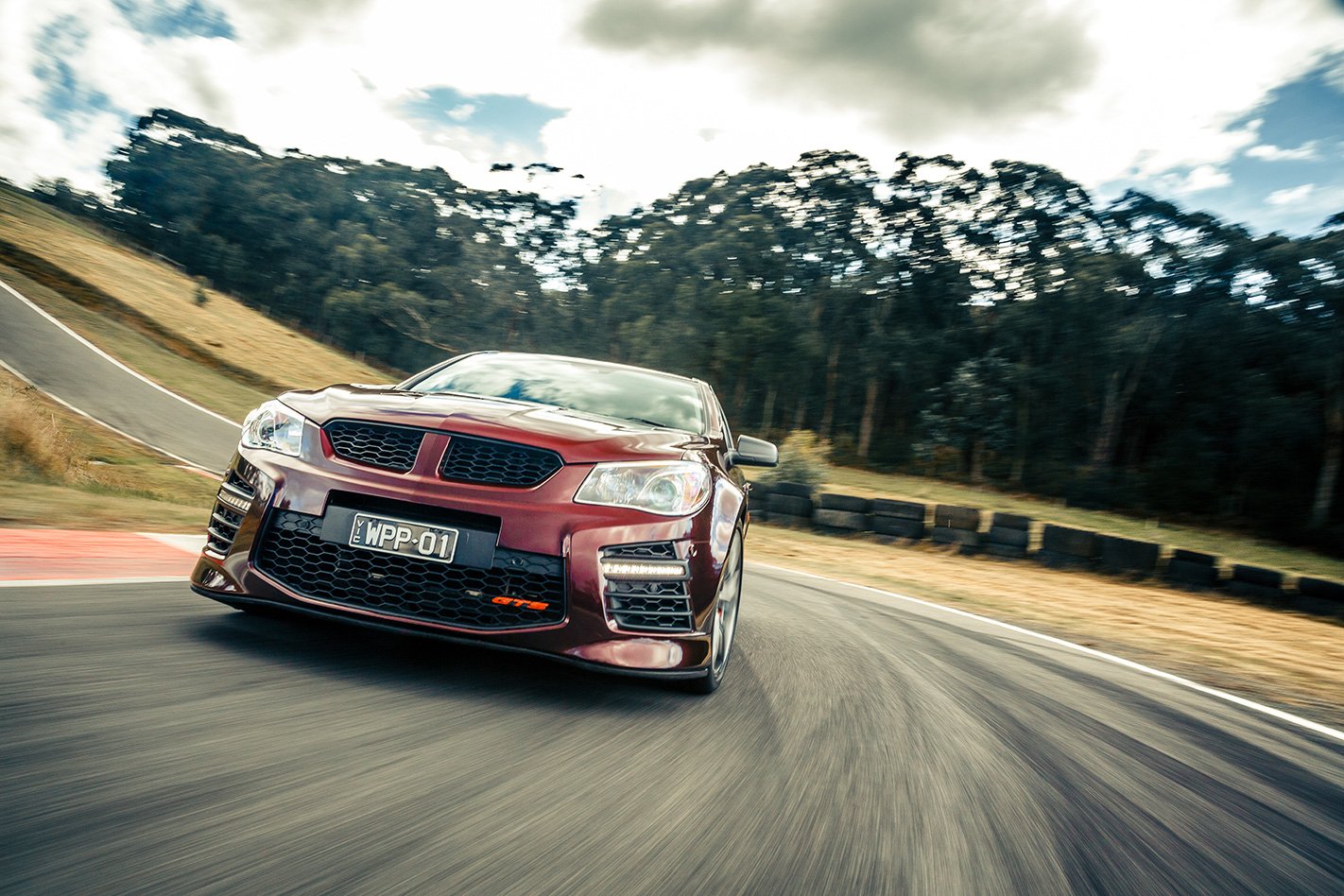
In fact, while the Mustang stopped in a decent 37.1m, the W557 hauled down from the same 100km/h in a staggering 33.5m. And the Walky’s brakes don’t just stop better, they feel better, and it remains that the Mustang has a stiff pedal that gives nothing back in terms of info about what’s going on.
On the road, Nth-degree setting up for corners is all a bit academic, and it’s in this scenario that the W557 really starts to run away with things here. Literally. Even relatively small throttle inputs give a huge payback and the sensation is one I’m calling speedboating.

Well, that’s just how the W557 feels taking off from the traffic lights. It’s difficult to recall the last time we experienced part-throttle and mid-range stomp like this thing generates and even though the Mustang is fearsomely fast, the W557 is always a step ahead. It’s not that you can get on the noise any earlier, but when you do, the effect is seismic.
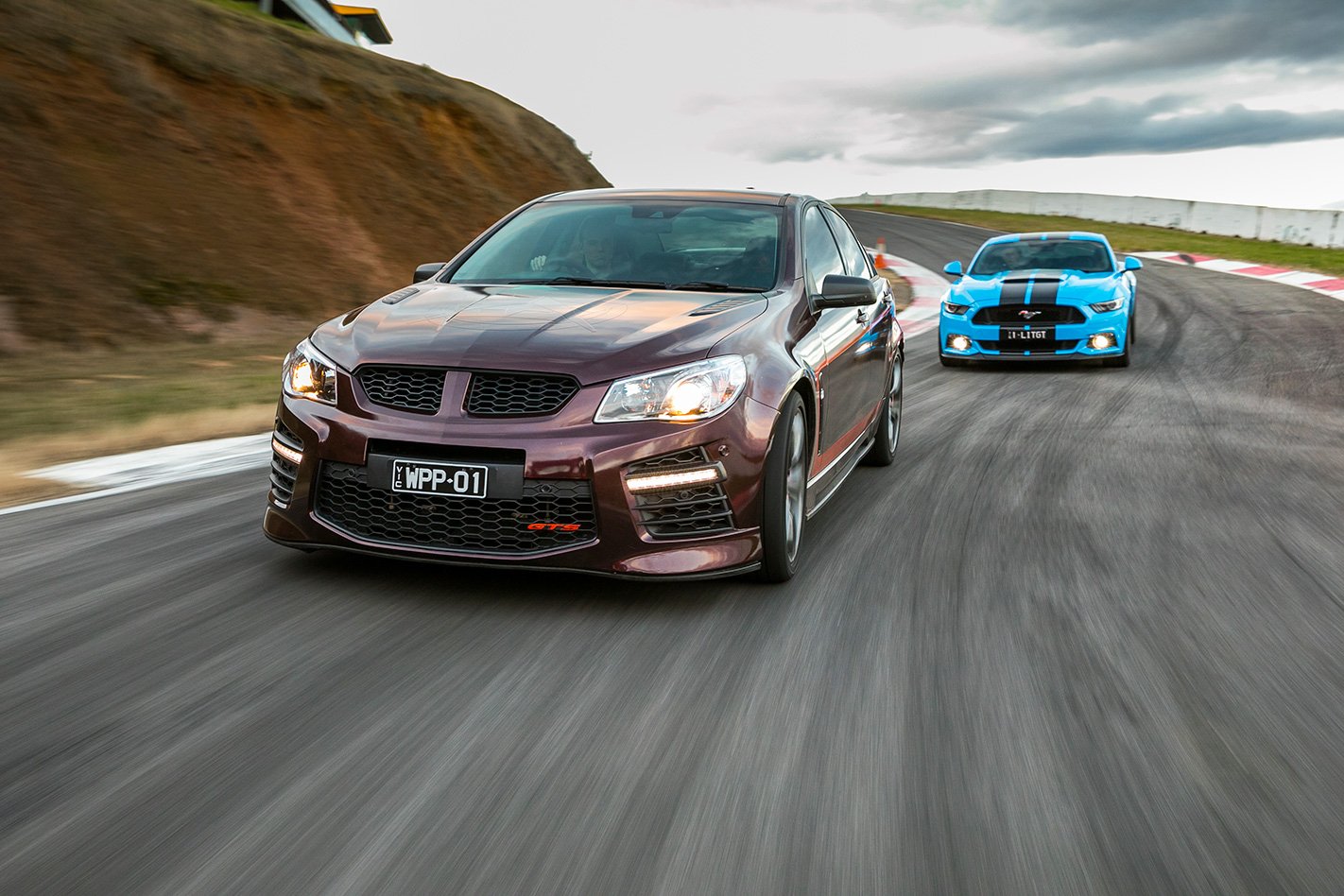
If you like ’em big, loud and fast, then a W557 is where it’s at. For now.
THE NUMBERS
| u00a0 | 2017 Walkinshaw W557 | 2017 Herrod Mustang GT |
| 0-100km/h | 3.81 | 4.99 |
| 0-400m | 11.69sec @ 201.56km/h | 12.59sec @ 195.81km/h |
| 80-120km/h | 1.9sec | 2.4sec |
| 100-0km/h | 33.50m | 37.08mu00a0 |
THE STRIP KINGS
THE Walkinshaw W557 is the fastest Aussie car MOTOR has ever tested to 100km/h, but the quarter-mile honours go to the Streetfighter FPV GTE tested at Hot Tuner 2012. While it trailed the W557 by a mere 0.02sec to 100km/h (3.83sec) it more than made up the difference over 400m with a stonking 11.54sec effort.
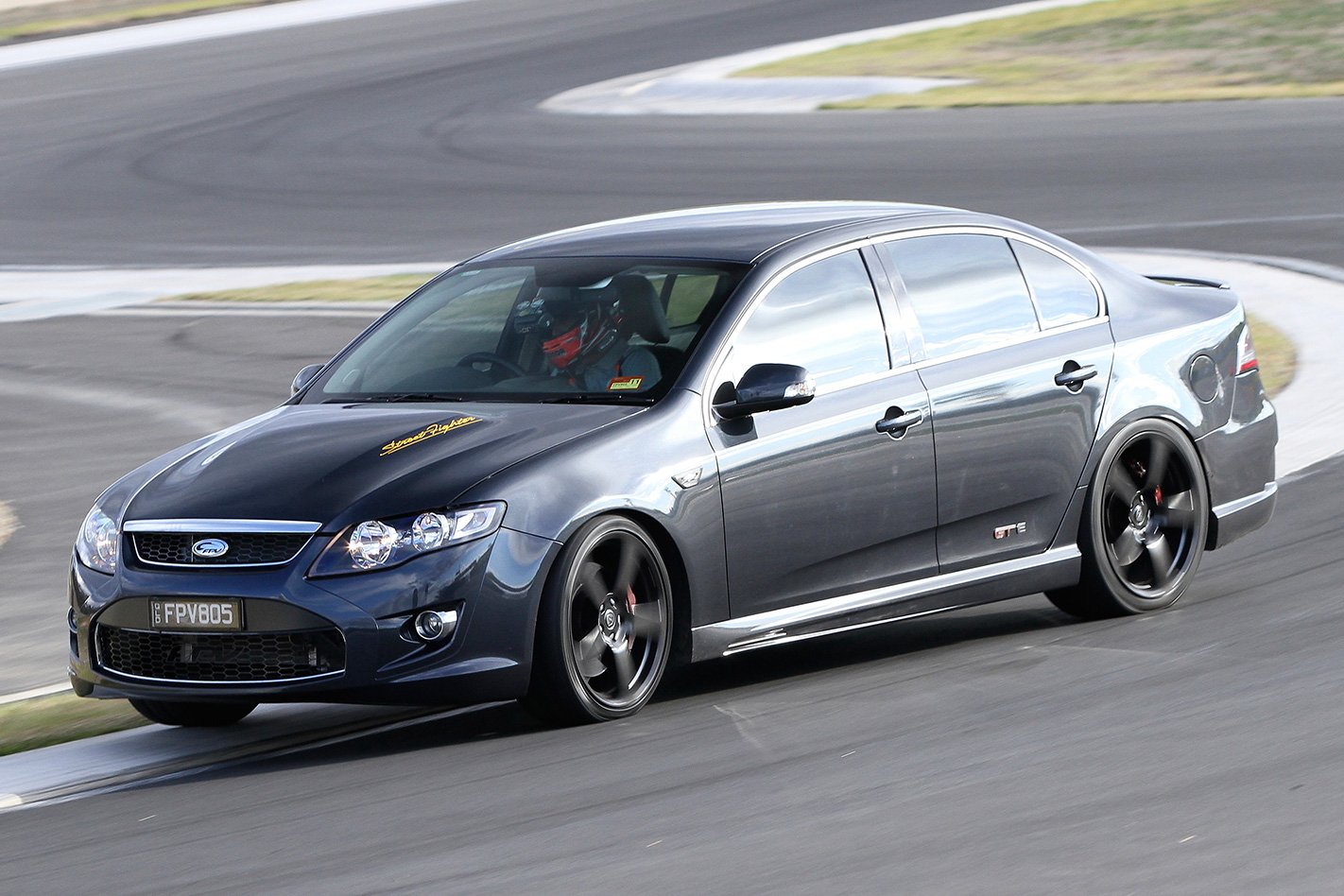
Our second-fastest Falcon ever represents the turbo six brigade, Herrod’s G6ET clocking 0-100km/h in 4.31sec and a 12.35sec quarter at 188.06km/h at Hot Tuner 2009. – SN
SPECS
| u00a0 | 2017 Herrod GT Mustang | 2017 Walkinshaw W557 |
| Body | 2-door, 4-seat coupe | 4-door, 5-seat sedan |
| Drive | rear-wheel | rear-wheel |
| Engine | 4951cc V8, DOHC, 32v, supercharger | 6162cc V8, OHV, 16v, supercharger |
| Bore/Stroke | 92.2 x 92.7mm | 103.1 x 92.0mm |
| Compressionu00a0 | 11.0:1u00a0 | 10.7:1 |
| Power | 507kW @ 7000rpm | 557kW @ 6200rpmu00a0 |
| Torqueu00a0 | 730Nm @ 3600rpm | 930Nm @ 4000rpm |
| Power/Weightu00a0 | 280kW/tonneu00a0 | 303kW/tonneu00a0 |
| Transmissionu00a0 | 6-speed manual | 6-speed automaticu00a0 |
| Weightu00a0 | 1813kg | 1841kgu00a0 |
| Suspension (F)u00a0 | struts, coil springs, anti-roll bar | struts, A-arms, adaptive dampers, anti-roll bar |
| Suspension (R)u00a0 | multi-links, coil springs, anti-roll baru00a0 | multi-links, coil springs, adaptive dampers, anti-roll baru00a0 |
| L/W/Hu00a0 | 4784/2156/1331mm | 4988/1899/1457mm |
| Wheelbaseu00a0 | 2720mmu00a0 | 2915mmu00a0 |
| Tracksu00a0 | 1570/1637mm (f/r)u00a0 | 1616/1590mm (f/r) |
| Steering | electrically assisted rack-and-pinion | electrically assisted rack-and-pinion |
| Brakes (F) | 380mm ventilated discs, 6-piston calipers | 390mm ventilated/drilled discs, 6-piston calipers |
| Brakes (R) | 330mm ventilated discs, single-piston calipers | 372mm ventilated/drilled discs, 6-piston calipers |
| Wheels | 20.0 x 9.0-inch (f); 20.0 x 9.5-inch (r)u00a0 | 20.0 x 8.5-inch (f); 20.0 x 9.5-inch (r)u00a0 |
| Tyre Sizes | 265/35 R20 (f); 285/35 R20 (r)u00a0 | 255/35 R20 (f); 275/35 R20 (r) |
| Tyres | Pirelli P Zero | Continental ContiSportContact 5P |
| Price as tested | $80,990u00a0 | $113,490 |
| Pros | Feels unmodified until you spank it, then it goes troppo; compliance | O. M. G. The fastest of its breed. Ever; impressive brakes; handling |
| Cons | Interior quality is still not a Mustang strong suit | Purple wrap on our test car blew, and no, you donu2019t have to wrap yours |

